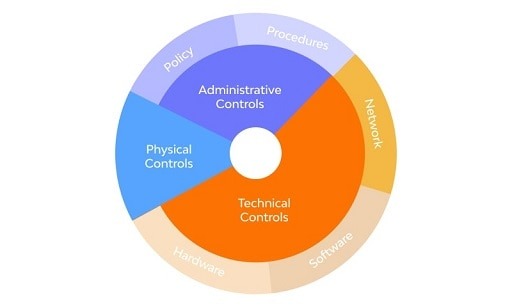Data lake protection is the process of assuring that individuals only have entry to the information they require – only certain files or particular content within a document – as determined by the organization’s data lake security accessibility regulations. These guidelines may be affected by the company’s own data management philosophy and those mandated by data privacy legislation.

Data lake security delivers a clear, tangible set of policies and procedures that secure your data lake from unwanted access while also creating an optimal access system that does not slow down your activities.
Compatibility with key regulatory rules must also be considered in data lake security measures. Data lake security rules are often divided into three sections: authorization, cryptography, and authenticity.
Security Policies of Data Lake Security
Authorization defines who in your company has accessibility to the data lake and how much privilege they have. For instance, one person may be able to access and modify the data lake while someone may watch it. These permissions might be granted depending on positions or other characteristics.
Cryptography is the process of encrypting data. So that only those who have been granted access to it can interpret and use it. Encryption is required at all levels of data lake security.
Authenticity is a method of validating someone’s identity and deciding whether they have the authorization to access a data lake. Passwords and ids are examples of authentication mechanisms, multiple-device authentication, and more.
You may also like: 5 Reasons Cyber Security is Important for Everyone
Best Methods of Data Lake a Security
Isolation is the cornerstone of every cybersecurity strategy. Its goal is to limit each web network’s capability to the purposes for which it was intended. Access to the data lake should be restricted to qualified and highly experienced operators to reduce the possibility of hacks.
Stabilizing your data lake architecture entails several approaches that isolate your data lake’s key operations from other digital providers. When it actually comes to safeguarding your Amazon Web Resources account, for instance, you should adhere to the setup default settings detailed by the Research Center for Cyber Protection.
Host security system, also known as host-based confidentiality and safety, safeguard the hosting from harmful assaults and is frequently the final line of defense against your data and hostile actors.
Host data security can involve host intruder identification, security testing, and security logs, among other things. To offer the appropriate level of data accessibility restriction for data lakes. You must first establish a solid foundation for identity and authorization management.
Whatever identification administration technology you use, be sure it is tightly integrated with your cloud computing environment.
Other Impotent Methods of Data Lake Security
Encryption is crucial to database confidentiality, especially data lakes. You’ll need to have cryptography in place for both moving data and data held at rest. Authorization rotation is another critical aspect of encryption that must be addressed.
Loss of records can be disastrous for any organization, which is why effective data damage protection is a must-have best practice. Spend in backup memory and high accessibility, as well as any technologies that will allow for the quick recovery of mistakenly lost or modified data. When evaluating any visual storage provider, make data loss avoidance a key assessment instrument.
All data architectural modifications or new sophisticated analytic applications that result in the development of a Data Lake. A Data Lake should fulfil the same complex security and safety requirements as any conventional data environment and protect the company’s business, users, money, and legacy.
Users from various business units can easily access Contents Lake and refine, analyze, and enhance its information utilizing techniques of their choice, raising the danger of a breach of Cybersecurity.
Would you like to read more about Data Security-related articles? If so, we invite you to take a look at our other tech topics before you leave!
![]()












